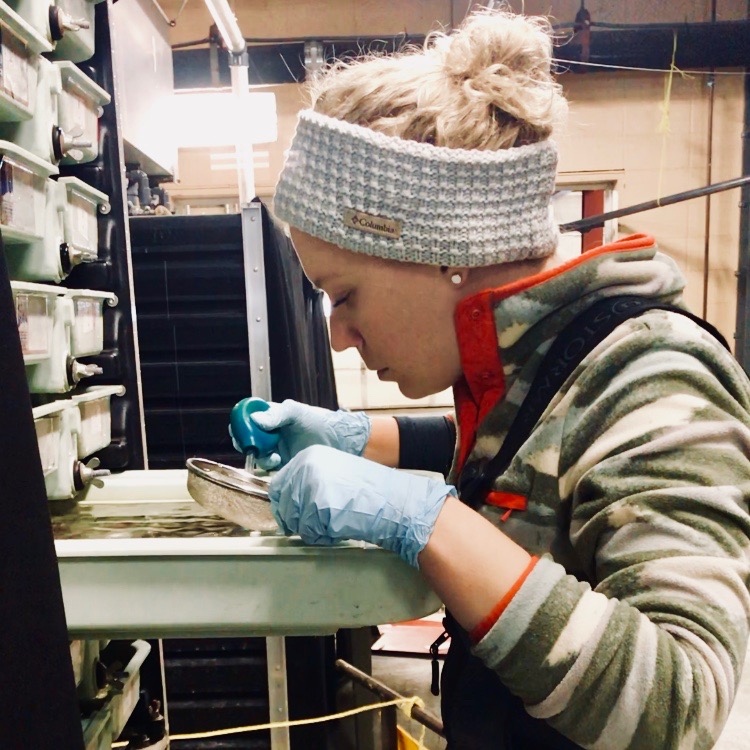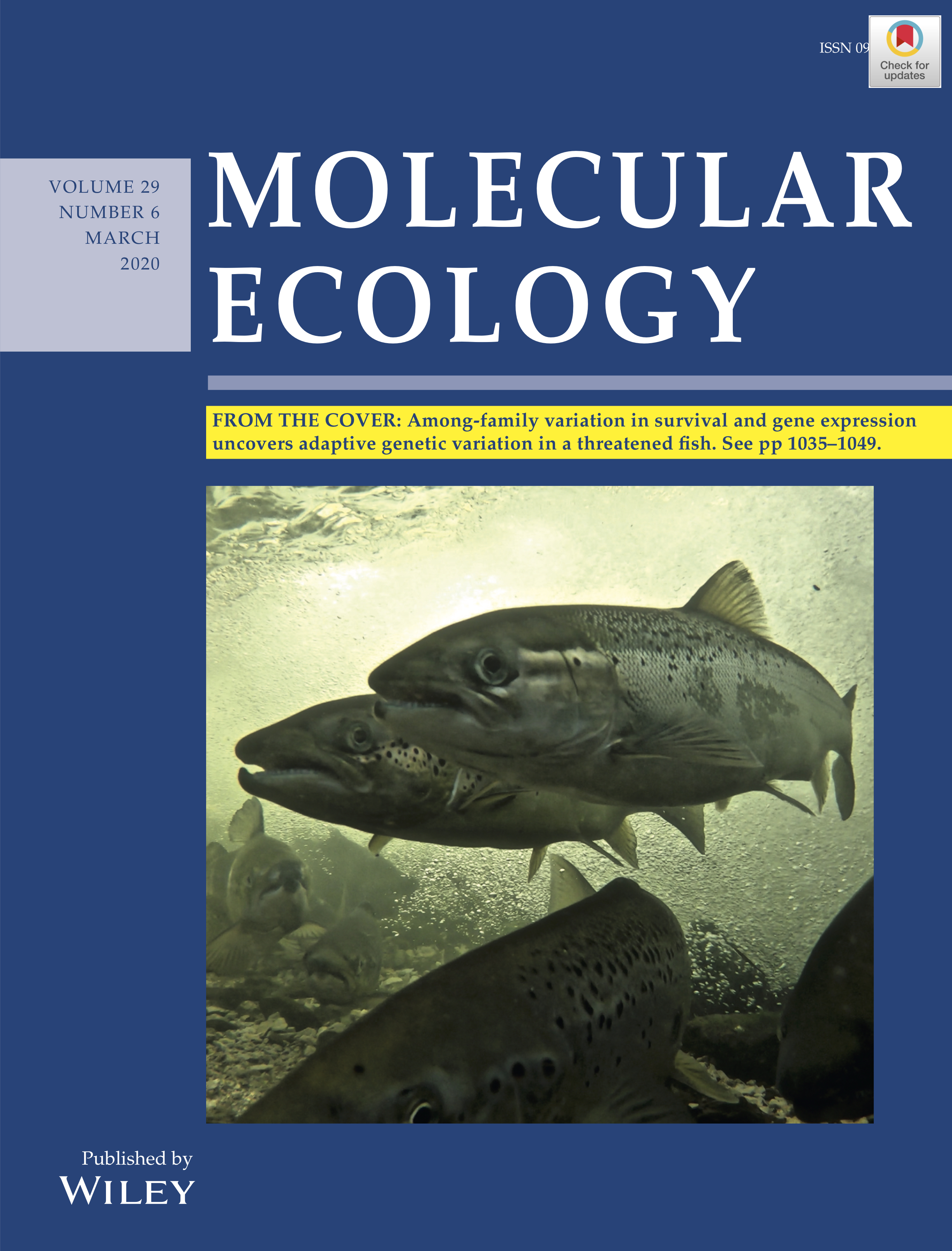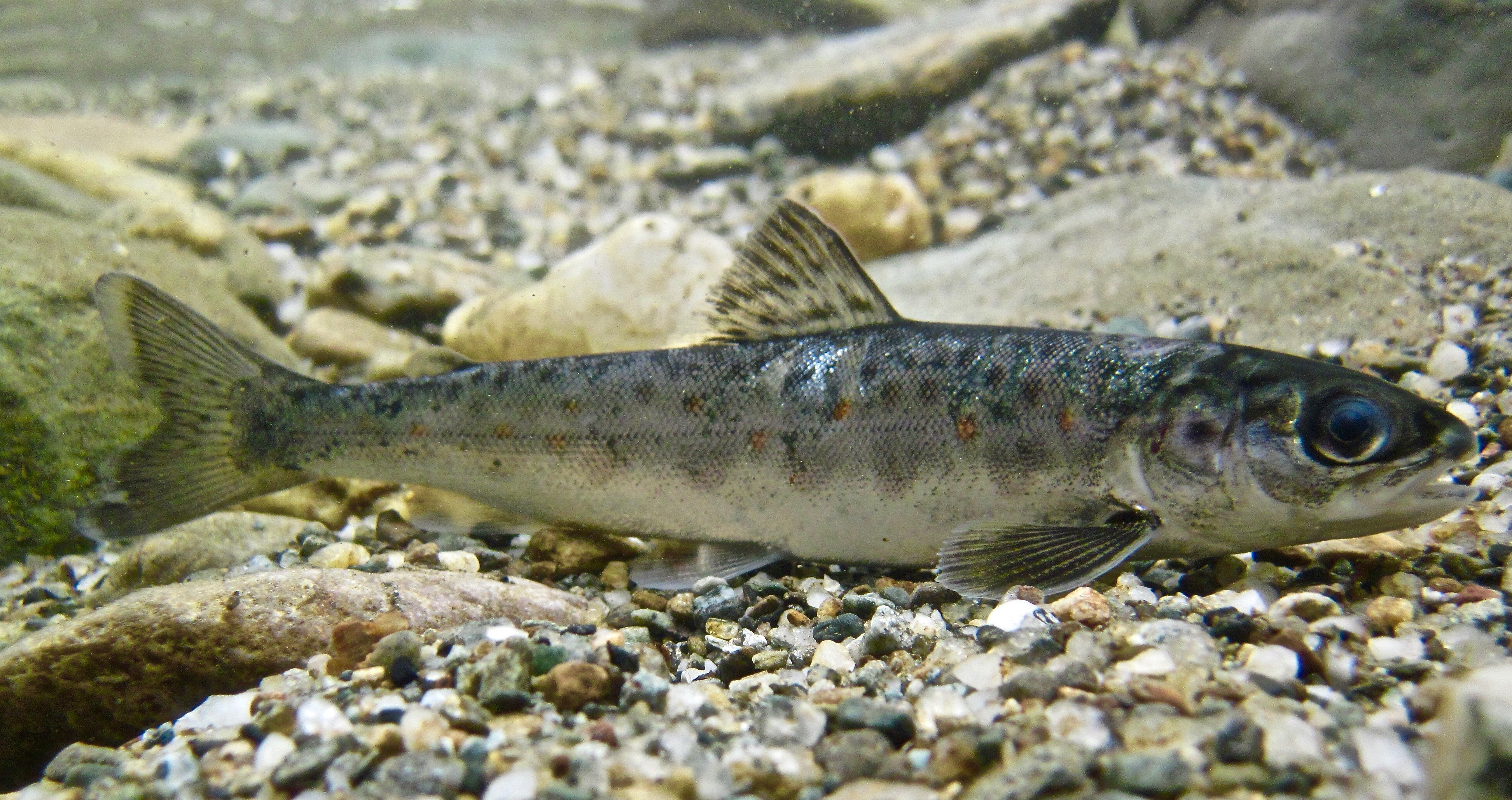Predicting adaptive responses
Lake Champlain
Situated on the New York-Vermont border, Lake Champlain once supported a thriving Atlantic salmon population. Now, decades of dam construction, spawning habitat degradation, and species introductions have led to the current state of Lake Champlain Atlantic salmon: a hatchery-supported population with very little natural recruitment. (For a detailed history of this population and current status of USFWS restoration work, see this excellent article by Paul Greenberg.)

Thiamine deficiency
My work focuses on mitigating the effects of one of these challenges to population restoration. Alewife, an invasive species of fish, became established in Lake Champlain in 2003. By no coincidence, the first observations of thiamine (vitamin B1) deficiency in Atlantic salmon were recorded just a few years later. Alewife contain an enzyme, thiaminase, that degrades thiamine into forms unusable by fishes. When Atlantic salmon feed on alewife, consumption of this enzyme induces a thiamine deficiency in the salmon. For spawning females, this means producing offspring that often exhibit yolk sac hemorrhaging, edema, and erratic swimming behavior, and subsequently experience high rates of mortality.
Populations of many other taxa--including reptiles, birds, and invertebrates--are also impacted by thiamine deficiency. For a review of the causes, ecology, and consequences of thiamine deficiency, see my paper published in Reviews in Fish Biology and Fisheries.

Research objective
Currently, Lake Champlain hatcheries must treat collected Atlantic salmon eggs with supplemental thiamine to avoid otherwise high rates of mortality due to thiamine deficiency. However, when eggs are left untreated, we observe high variation in survival among genetically unique families. The goal of this project is to determine whether or not heritable, genetic variation underlies individual differences in capacity to tolerate low thiamine. If selection on this tolerance is possible, this work will help to inform hatchery practices that capitalize on the process of natural selection.

Identifying adaptive variation
The goals of this portion of the project included using experimental transcriptomics to:
- Identify genes differentially expressed between thiamine treated and untreated individuals to characterize the effects of thiamine deficiency on metabolic pathways
- Describe patterns of gene expression associated with differential survival among families to determine whether gene expression patterns support a genetic basis for thiamine requirement
We also identified 1,400 genes with expression patterns associated with variation in survival among families (see graphical abstract below). These genes and their associated regulatory elements may play roles in an adaptive evolutionary response to thiamine deficiency. Such a response would reduce the need for hatchery thiamine treatments and help pave the way for increased natural recruitment in Lake Champlain. The patterns we describe in the associated manuscript (now in Molecular Ecology) suggest a genetic basis for thiamine requirement and that the genetic variation required for adaptation is already present in the Lake Champlain population.
[Cover image photo credit: W. Ardren. Fry close-up photo credit: E. Lehnert. Graphical abstract and drawings: G. Sincich]
